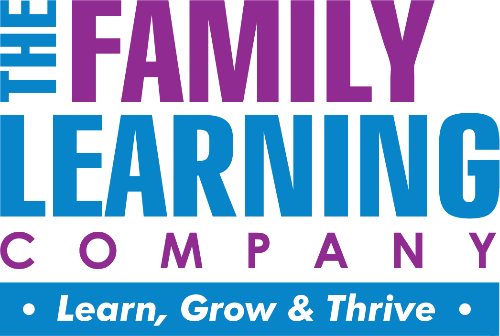Family Literacy and Corporations
ROI
If somebody offered you a proven productivity improvement approach that generated an ROI of greater than 100% a year, would you be interested? Well, here’s the ROI achieved by companies in three industries from helping their employees improve their reading and writing skills:

According to smallbusiness.chron.com, the large number of people at or below basic literacy skill levels costs United States businesses and society at least $225 billion annually. Workers who cannot read and interpret basic signs and instructions compromise safety, slow production and cause errors that affect profits, customer satisfaction, and compliance with laws and regulatory requirements.
The same low reading levels also affect the ability of workers to communicate with each other and to function as effective teams.
Retention
By building the reading and writing skills of their employees, and potential employees, companies build productivity, safety, profitability, and most important: loyalty. The gift of literacy is invaluable – it changes the lives of the adults who achieve it, their children, their families and their communities. In return, employees give greater loyalty to their employers: win-win.
Migrants
Migrants who have recently arrived in the U.S. face distinct educational needs shaped by their diverse backgrounds, languages, and prior schooling experiences. Many of these individuals, particularly children, enter the U.S. education system with limited English proficiency, requiring intensive language support to ensure effective communication and comprehension in the classroom. English as a Second Language (ESL) programs, bilingual education, and culturally responsive teaching methods are crucial to help them bridge language gaps and succeed academically.
Additionally, recently arrived migrant students often encounter educational disruptions due to their migration journey. They may have gaps in their learning, differing levels of prior education, or unfamiliarity with the U.S. curriculum. Therefore, these students need individualized learning plans, remedial instruction, and flexible educational pathways that accommodate their varied educational backgrounds.
Social and emotional support is also essential, as many migrant students face trauma from displacement, separation from family, or adverse experiences in their home countries or during migration. Counseling services, peer mentoring, and supportive learning environments help foster their emotional well-being and promote resilience.
Furthermore, educational programs should engage with migrant families, offering resources and support to help them navigate the U.S. education system, understand their rights, and actively participate in their children’s learning and development.
Case Study
Maria is a 10-year-old migrant child who recently arrived in the U.S. from Guatemala with her mother, Ana. After a challenging journey and a period of adjustment, Maria and Ana settled in a small town in Texas, where Maria enrolled in a local elementary school. Despite her eagerness to learn, Maria struggled with English language comprehension and adapting to a new educational system. Her mother, Ana, who speaks limited English and had only a basic education herself, felt helpless in supporting Maria's academic progress.
Recognizing these challenges, the school recommended a family learning software designed specifically for migrant families. The software, available in both English and Spanish, provides an interactive platform for parents and children to learn together. It includes bilingual educational modules on various subjects, interactive storytelling, and activities that encourage family participation, such as reading exercises, math games, and cultural content to build confidence and strengthen language skills.
Ana, though initially unsure of her ability to assist Maria, decided to use the software with her daughter every evening. Together, they navigated through lessons that began with basic English vocabulary and phrases, gradually progressing to more complex concepts. The software’s user-friendly interface and dual-language options allowed Ana to engage with the content, building her own English skills while helping Maria.
As weeks went by, Ana noticed a positive change in both herself and Maria. Maria's comprehension and speaking skills began to improve, and she became more confident in class. Her teacher observed that Maria was participating more actively and showing a better grasp of math and reading. Ana, too, felt empowered, realizing she could play an active role in her daughter's education, despite her own limited schooling. This engagement also strengthened their bond, as they spent quality time learning together, laughing at interactive games, and celebrating small victories, such as mastering new words or solving math problems.
Furthermore, the software's cultural components allowed Maria to see her heritage represented in her learning materials, which made her feel more comfortable and connected to her new environment. The program also included resources for parents, like Ana, on how to communicate with teachers, understand school expectations, and navigate the U.S. education system.
Within a few months, Maria's academic performance had significantly improved. Ana, now more confident in English, became actively involved in school meetings and events. This transformation was not just about academic success but also about fostering a sense of belonging and community for both Maria and her mother. The family learning software served as a bridge, connecting them to a new culture while valuing their own, proving that education can be a collaborative, family-centered journey of growth and empowerment.
The Research
Since the advent of computer-assisted instruction on mainframe computers, educators have assumed that learners should use computers on their own. Yet, research shows that just as they do in classroom settings, learners learn faster and more easily when they work together at least some of the time.
Why is peer learning more effective? Because at their core, human beings are social learners. In a meta-analysis of studies investigating instructional practices that enhanced motivation for, and engagement in, reading, Guthrie and Humenick identified four instructional practices with significant effect sizes including “opportunities to collaborate with other students in discussion and assignment groups to achieve their learning goals.” During its research phase from 2000 until 2010, The Writers Express found that students improved their writing faster in response to peer feedback along with teacher feedback than from teacher feedback alone. The National Mathematics Advisory Panel sites 31 studies in its 2008 report indicating that various forms of peer learning accelerate the learning of mathematics, eight of which studied peer learning with computer software.The computer science department of Brandeis University created a web-based computer program for skills development (mathematics, geography, and spelling) and found that when they applied a scoring algorithm that rewarded students for the improvement of their peers, the entire group learned significantly faster together.
REQUEST A CONVERSATION OR WEB DEMO
Request a Conversation or Web Demo today to see how The Family Learning Company’s products can help your employees.

